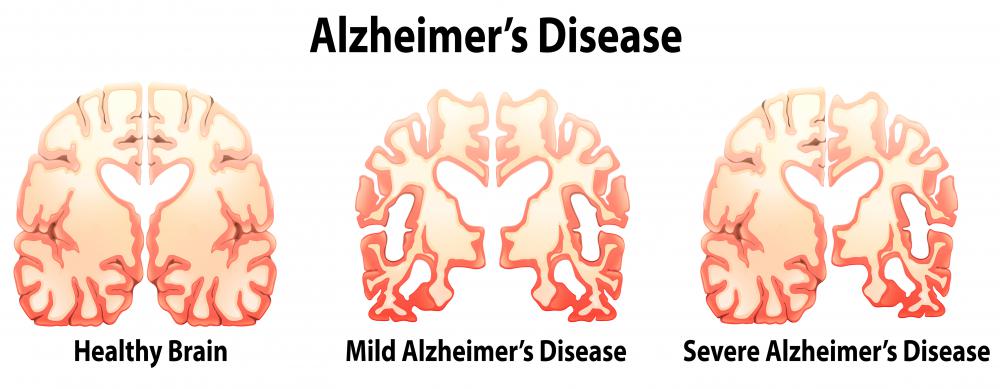At TheHealthBoard, we're committed to delivering accurate, trustworthy information. Our expert-authored content is rigorously fact-checked and sourced from credible authorities. Discover how we uphold the highest standards in providing you with reliable knowledge.
What are Amyloid Fibrils?
Amyloid fibrils are thread-like protein aggregates that are insoluble and resistant to protease activity. Depending on the protein making up the fibrils, amyloid structures can accumulate at different sites in the body, including the brain, joints and pancreas. Extensive genetic, pathological and biochemical evidence indicates that the accumulation of amyloid fibrils in tissues is involved in numerous diseases, including Alzheimer’s, Parkinson’s, type 2 diabetes and prion disease. For example, the brains of Alzheimer’s patients show plaques of amyloid fibrils formed from beta-amyloid protein.
Approximately 30 proteins form amyloid fibrils in humans; they are not related and do not share a common structure or sequence similarity. All of them, however, are folded in a manner that differs from normal protein folding patterns, with the same structure always found at the core of a fibril. Proteins that form amyloid fibrils in human diseases include immunoglobulin light chains, gelsolin, procalcitonin, beta-amyloid protein, serum amyloid A protein, beta 2-microglobulin, transthyretin and prion protein.

Regardless of the proteins involved, amyloid fibrils have characteristic structural properties, particularly their cross-beta-sheet quaternary structure. Single proteins build into long filaments that link side-by-side into ribbons. These stacks of beta-sheets, tightly connected by hydrogen bonds, run perpendicular to the fibril's long axis.
This distinctive structure might result from the strong charge carried by the fibrils’ building blocks. Proteins with glutamine-rich sequences are important in the prion diseases and Huntington's disease. The glutamines can brace the beta-sheet structure by forming intrastrand hydrogen bonds between the amide carbonyls and nitrogens. In other proteins, such as the Alzheimer's-associated beta-ameloid protein, hydrophobic association is thought to hold the structure together.

Amyloid fibrils are a result of problems in protein self-assembly and appear to be a result of the aging process. The vast majority of diseases caused by amyloid structures are found in elderly patients. It was once believed that ameloid fibrils are inert, with cell-damaging toxic intermediates during their formation causing the cell damage. Research has shown, however, that the fibers themselves are actually toxic, particularly when fragmented into shorter pieces. It is not known exactly how the fibers are toxic to cells or why the shorter fibers are more toxic, but one possibility is that their small size makes it easier to enter cells.

These fibrils have a characteristic straight, unbranching appearance when observed by electron microscopy. They are usually identified indirectly using fluorescent dyes, stain polarimetry, circular dichroism or Fourier transform infrared spectroscopy. An X-ray diffraction analysis can be used to directly determine the presence of the cross-beta spine structure by characteristic scattering diffraction signals.
AS FEATURED ON:
AS FEATURED ON:















Discussion Comments
@Terrificli -- another problem with amyloid fibrils in general is that one of the most effective ways to curb them is through chemotherapy. One of the few things we do know is that amyloid fibrils develop in the elderly, and chemotherapy is taxing for even someone who is youthful and better able to recover from the effects of that treatment.
In a number of cases, the chemotherapy becomes as dangerous as the condition that has developed in response to the formation of amyloid fibrils. That's the very definition of being caught between a rock and a hard place, isn't it?
What is particularly disturbing about amyloid fibrils is that there are a lot of theories about why they form but few effective treatment regimens. The treatment of amyloid fibrils that can lead to a number of very serious conditions is typically left up to experts in the field and there are precious few of them in the United States or anywhere else for that matter.
To complicate things further, it is not always easy to determine that amyloid fibrils are at the root of conditions. For example, amyloidosis is a condition where the fibrils form and restrict the normal operation of vital organs. If that organ is, say, the heart then a doctor might diagnose the patient as having a very common heart condition rather than the very rare and much more dangerous amyloidosis. The patient could be treated for a heart condition rather than amyloidosis for awhile and lose valuable time that could be used to curb the cause of the problem.
Post your comments